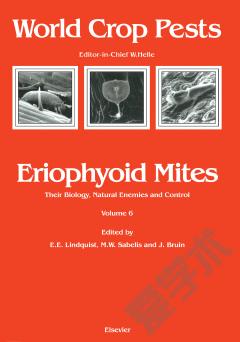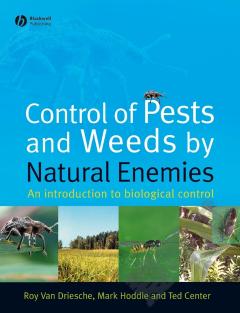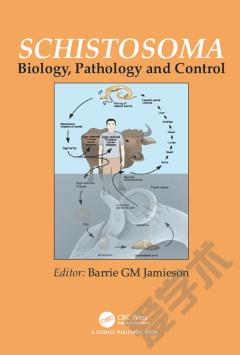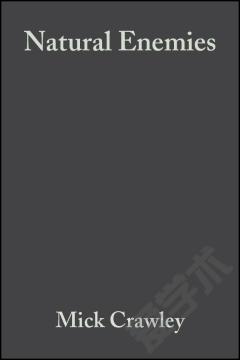Eriophyoid Mites —— Their Biology, Natural Enemies and Control
----- 绒螨的生物学、天敌及其防治
Due to space limitations only selected papers have been listed. Part 1 THE ERIOPHYOIDEA. External Anatomy and Notation of Structures (E.E. Lindquist). Systematics, Diagnoses for Major Taxa, and Keys to Families and Genera with Species on Plants of Economic Importance (E.E. Lindquist, J.W. Amrine, Jr.). Nomenclatorial Problems in Usage of Some Family and Genus Names (E.E. Lindquist). Internal Anatomy and Physiology (G. Nuzzaci, G. Alberti). Oogenesis and Spermatogenesis (G. Alberti, G. Nuzzaci). Arrhenotokous Parthenogenesis (W. Helle, M. Wysoki). Life Forms, Deuterogyny, Diapause and Seasonal Development (D.C.M. Manson, G.N. Oldfield). Spermatophore Deposition, Mating Behaviour and Population Mating Structure (G.N. Oldfield, K. Michalska). Diversity and Host Plant Specificity (G.N. Oldfield). Ancient Associations: Eriophyoid Mites on Gymnosperms (J. Boczek, V.G. Shevchenko). Secondary Associations: Eriophyoid Mites on Ferns (U. Gerson). Feeding Effects on Host Plants: Gall Formation and Other Distortions (E. Westphal, D.C.M. Manson). Toxemias and Other Non-Distortive Feeding Effects (G.N. Oldfield). Web Spinning, Wax Secretion and Liquid Secretion by Eriophyoid Mites (D.C.M. Manson, U. Gerson). Eriophyoid Mites as Vectors of Plant Pathogens (G.N. Oldfield, G. Proeseler). Evolution of Eriophyoid Mites in Relation to their Host Plants (E.E. Lindquist, G.N. Oldfield). Phylogenetic Relationships (E.E. Lindquist). Evolutionary Ecology: Life History Patterns, Food Plant Choice and Dispersal (M.W. Sabelis, J. Bruin). Sampling Techniques (T.M. Perring, C.A. Farrar, G.N. Oldfield). Rearing Techniques (G.N. Oldfield, T.M. Perring). Preparation, Mounting and Descriptive Study of Eriophyoid Mites (J.W. Amrine, Jr, D.C.M. Manson). Karyotyping Techniques (M. Wysoki, W. Helle). SEM and TEM Techniques (G. Alberti, G. Nuzzaci). Toxicological Test Methods for Eriophyoid Mites (C.C. Childers). Part 2 NATURAL ENEMIES OF ERIOPHYOID MITES. Phytoseiidae (M.W. Sabelis). Stigmaeidae (H.M.A. Thistlewood, D.R. Clements, R. Harmsen). Other Predatory Arthropods (T.M. Perring, J.A. McMurtry). Pathogens of Eriophyoid Mites (C.W. McCoy). Part 3 DAMAGE AND CONTROL OF ERIOPHYOID MITES. Nature of Damage and its Assessment (R.N. Royaly, T.M. Perring). Stylar Feeding Injury and Control of Eriophyoid Mites in Citrus (C.W. McCoy). Damage and Control of Eriophyoid Mites in Apple and Pear (M.A. Easterbrook). Other Fruit Trees and Nut Trees (M. Castagnoli, G.N. Oldfield). Coconuts (D. Moore, F.W. Howard). Grape (C. Duso, E. de Lillo). Currants and Berries (E. de Lillo, C. Duso). Vegetables (T.M. Perring). Corn and Grain Plants (W.E. Styer, L.R. Nault). Grasses (W.E. Frost, P.M. Ridland). Sugarcane, Coffee and Tea (G.P. ChannaBasavanna). Ornamental Flowering Plants (M.K.P. Smith Meyer). Flower Bulbs (C.G.M. Conijn, J. van Aartrijk, I. Lesna). Ornamental Coniferous and Shade Trees (M. Castagnoli). Forage Crops (P.M. Ridland). Host Plant Resistance (E. Westphal, R. Bronner, F. Dreger). Pesticide Resistance in Eriophyoid Mites, their Competitors and Predators (R.H. Messing, B.A. Croft). Chemical Control of Eriophyoid Mites (C.C. Childers, M.A. Easterbrook, M.G. Solomon). Part 4 BENEFICIAL EFFECTS OF ERIOPHYOID MITES. Aceria, Epitrimerus and Aculus Species and Biological Control of Weeds (S.S. Rosenthal). Phyllocoptes fructiphilus and Biological Control of Multiflora Rose (J.W. Amrine, Jr). Eriophyoids as Competitors of Other Phytophagous Mites (J.E. Dunley, B.A. Croft). Eriophyoid Mites as Alternative Prey (M.W. Sabelis, P.C.J. van Rijn). General Index - including predators, pathogens and higher taxa of eriophyoid mites excluding eriophyoid mite species and genera, and their host plants. Index of Eriophyoid Mite Species. Index of Host Plants.
{{comment.content}}








 京公网安备 11010802027623号
京公网安备 11010802027623号